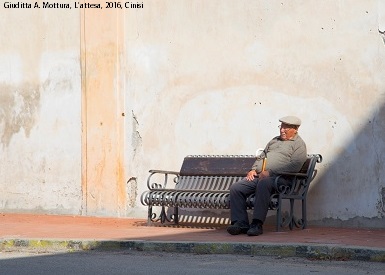China’s narrative of the fight against COVID-19: a case study of the representation of social actors in China Keywords
DOI:
https://doi.org/10.54103/2035-7680/19193Parole chiave:
Chinese political discourse; China Keywords; COVID-19; narrative; social actors representation; Critical Discourse StudiesAbstract
Since the outbreak of the coronavirus pandemic, the Chinese political leadership has devoted substantial efforts to shape, through media and institutional discourses, a specific narrative of its response to the crisis, framing it as a fight in which the Chinese people, under the leadership of Xi Jinping and the Chinese Communist Party, promptly came together to defeat the virus.
The present paper examines this dominant narrative focusing on the Chinese language section on the fight against COVID-19 of the multilingual online platform China Keywords, a project run by State and Party-affiliated institutions. Drawing on the theoretical background and analytical tools from Critical Discourse Studies, the paper provides an analysis of the discursive representation of social actors constructed by this tool. The analysis shows how different discursive strategies employed to represent specific social actors contribute to reinforce the constitutive elements of the Chinese leadership’s dominant narrative of the events of early 2020. Moreover, the paper argues that the section of China Keywords on the topic should be understood as one of the products of the multifaceted institutional efforts to “tell China’s Covid-19 story well,” both domestically and internationally.
Metriche
Riferimenti bibliografici
Bandurski, David. “Telling China’s Covid-19 Story.” China Media Project, 10 June 2020. chinamediaproject.org/2020/06/10/telling-chinas-covid-19-story/. Accessed 6 Sept. 2022.
Baxter, Judith, and Kieran Wallace. “Outside In-Group and out-Group Identities? Constructing Male Solidarity and Female Exclusion in UK Builders’ Talk.” Discourse & Society, vol. 20, no. 4, 2009, pp. 411-29.
Devitt, Amy. Writing Genres. Southern Illinois University Press, 2004.
Fairclough, Norman. Critical Discourse Analysis. The Critical Study of Language. Longman, 1995.
Fedtke, Jana, Mohammed Ibahrine, and Yuting Wang. “Heroes in Harm’s Way: COVID-19 Narratives of China as a Form of Soft Power.” Asian Studies, vol. 10 no. 1, 2022, pp. 287-314.
Gallelli, Beatrice. “Una nuova ‘guerra di popolo’ per raccontare la ‘storia della Cina’.” Sinosfere, vol. 10, 2020. sinosfere.com/2020/03/28/beatrice-gallelli-una-nuova-guerra-di-popolo-per-raccontare-la-storia-della-cina. Accessed 6 Sept. 2022.
KhosraviNik, Majid. “Actor descriptions, action attributions, and argumentation: towards a systematization of CDA analytical categories in the representation of social groups.” Critical Discourse Studies, vol. 7, no. 1, 2010, pp. 55-72.
Koller, Veronika. “Analysing collective identity in discourse: social actors and contexts.” Semen vol. 27, 2009. journals.openedition.org/semen/8877. Accessed 6 Sept. 2022.
Liu Zhencong, and Liu Hui. “The Construction of China's National Image from Transitivity Perspective. A Case Study of Fighting COVID-19: China in Action.” Theory and Practice in Language Studies, vol. 11, no. 11, 2021, pp. 1421-1427.
Mottura, Bettina. Keywords in Chinese political language. Unicopli, 2020.
---. “The discursive creation of ideology in the contemporary Chinese political context.” Lingue e Linguaggi, vol. 42, 2021, pp. 195-212.
Reisigl, Martin, and Ruth Wodak. Discourse and Discrimination: Rhetorics of Racism and Antisemitism. Routledge, 2000.
---. “The Discourse-Historical Approach.” Methods of Critical Discourse Analysis. 2nd ed., edited by Ruth Wodak and Micheal Meyers, SAGE, 2009, pp. 87-121.
Renminwang 人民网. “Jiang hao Zhongguo gushi” 讲好中国故事 [Tell China’s story well]. Renminwang, 6 September 2017. theory.people.com.cn/n1/2017/0906/c413700-29519537.html. Accessed 6 Sept. 2022.
SCIO (State Council Information Office). “Kangji xing guan feiyan yiqing de Zhongguo xingdong” 抗击新冠肺炎疫情的中国行动” [China’s actions against COVID-19]. 6 June 2020, www.scio.gov.cn/ztk/dtzt/42313/43142/index.htm. Accessed 6 Sept. 2022.
Van Leeuwen, Theo. “The representation of social actors.” Texts and Practices. Reading in Critical Discourse Analysis, edited by Carmen Rosa Caldas-Coulthard and Malcolm Coulthard. Routledge, 1996, pp. 32-70.
Wen Yao. “Branding and Legitimation: China’s Party Diplomacy amid the COVID-19 Pandemic.” China Review, vol. 21, no. 1, 2021, pp. 55–90.
Williams, Raymond. Keywords. A Vocabulary of Culture and Society. Fontana, 1976.
Wodak, Ruth. “The Discourse-Historical Approach.” In Methods of Critical Discourse Analysis, edited by Ruth Wodak and Michael Meyers, SAGE, 2001, pp. 63-94.
Wodak, Ruth, Rudolf de Cillia, Martin Reisigl, and Karin Liebhard. The discursive construction of national identity. Edinburgh Univesity Press, 2009.
Xi Jinping 习近平. “Zai tongchou tuijin xin guan feiyan yiqing fangkong he jingji shehui fazhan gongzuo bushu huiyi shang de jianghua” 在统筹推进新冠肺炎疫情防控和经济社会发展工作部署会议上的讲话 [Speech at the meeting on coordinating the prevention and control of COVID-19 and economic and social development]. Renminwang, 23 February 2020. www.xinhuanet.com/politics/leaders/2020-02/23/c_1125616016.htm. Accessed 6 Sept. 2022.
---. “Gongtong goujian renlei mingyun gongtongti” 共同构建人类命运共同体 [Jointly build a community with a shared future for mankind], Qiushi, 1 January 2021. www.qstheory.cn/dukan/qs/2021-01/01/c_1126935865.htm. Accessed 6 Sept. 2022.
---. “Tuanjie hezuo shi guoji shehui zhansheng yiqing zui youli wuqi” 团结合作是国际社会战胜疫情最有力武器 [Solidarity and cooperation are the most powerful weapon for the international community to overcome the epidemic], Qiushi, 15 April 2020. www.qstheory.cn/dukan/qs/2020-04/15/c_1125857091.htm. Accessed 6 Sept. 2022.
Xinhua. Xinhua. “China publishes timeline on COVID-19 information sharing, int'l cooperation”. Xinhuanet, 6 April 2020, www.xinhuanet.com/english/2020-04/06/c_138951662.htm. Accessed 6 Sept. 2022.
Yang Yifan, and Chen Xuchen. “Globalism or Nationalism? The Paradox of Chinese Official Discourse in the Context of the COVID-19 Outbreak.” Journal of Chinese Political Science, vol. 26, 2021, pp. 89-113.
Yip Po-Ching and Don Rimmington. Chinese: A Comprehensive Grammar. Routledge, 2004.
Zhao Xiaoyu. “Chinese nationalism during the COVID-19 pandemic: Conciliatory and confrontational discourses.” Nations and Nationalism, 2022, pp. 1-20.
Zhongguo guanjianci 中国关键词 [China Keywords]. keywords.china.org.cn/. Accessed 6 Sept. 2022.
Zhongguowang 中国网. “Xiangmu jieshao“ 项目介绍 [About the project], China.org.cn, 13 November 2014. keywords.china.org.cn/2014-11/13/content_34036371.html. Accessed 6 Sept. 2022.
Zhou Yunyun, and Xie Kailing. “Gendering National Sacrifices: The Making of New Heroines in China’s Counter-COVID-19 TV Series.” Communication, Culture and Critique, 2022, pp. 1-21.
Dowloads
Pubblicato
Come citare
Fascicolo
Sezione
Licenza

Questo articolo è soggetto a licenza Creative Commons Attribution-NonCommercial-NoDerivatives 3.0 International License.




